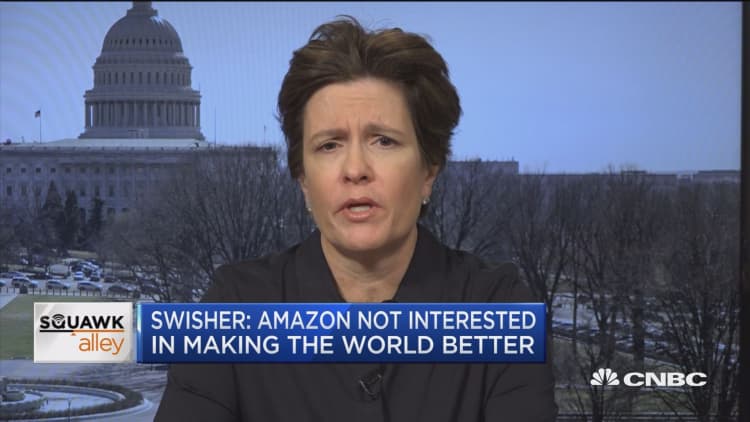Amazon is becoming a bigger presence in the world of physical retail, through its ownership of Whole Foods stores, the opening of bookstores, its rapid expansion of Amazon Go cashierless groceries and new 4-star stores for popular items.
For investors focused on the company's growing footprint, that all made for a confusing disclosure in Amazon's latest annual report, which showed that total square footage for physical stores dropped last year. According to the filing, Amazon's leased and owned physical stores occupied 20.1 million square feet at the end of 2018, down 6 percent from 21.3 million the previous year.

An Amazon spokesperson said in an emailed statement that the drop is the result of a change in how Amazon is reporting its store space to only take into accounts shops that are open.
"In 2018, we updated our methodology for reporting physical stores square footage to include only stores open to customers and exclude stores under development," Amazon said. "In the past year, we've increased our physical retail footprint and the number of locations customers can shop, adding Amazon 4-star, Amazon Go, Whole Foods Market stores and Amazon Books stores."
It's a minor change for a company that's now valued at about $800 billion, with a massive portfolio that spans online commerce, cloud computing, home devices and entertainment. When taking into account all of Amazon's office space and fulfillment centers across the globe, the company leases and owns a total of over 288 million square feet of space.
But in not including stores under development, Amazon is removing some level of transparency into how quickly it's building up new space for physical stores. Whole Foods announced at least 25 new location openings last year, while the number of Go stores increased to 10 across Seattle, Chicago and San Francisco. Amazon also launched three new 4-star stores, which sell an assortment of products with at least a 4-star rating on Amazon.
Amazon is expected to double down on physical store growth this year. It's planning an expansion for Whole Foods stores, primarily targeting suburbs and more rural areas like Idaho and Wyoming, the Wall Street Journal reported in December. And Bloomberg reported in September that the company is considering opening up to 3,000 Amazon Go stores by 2021.
Amazon's physical store footprint isn't the only number that dropped due to an accounting change last year.
The company said during its fourth-quarter earnings call that a 3 percent decline in physical store revenue was largely caused by a change in how it accounted for calendar days following the Whole Foods acquisition, and a shift in delivery and pick-up orders to the online sales component of revenue. Adjusting for those changes, physical store revenue would have grown 6 percent, Amazon said.
WATCH: Amazon is expanding Go footprint after one year in business




